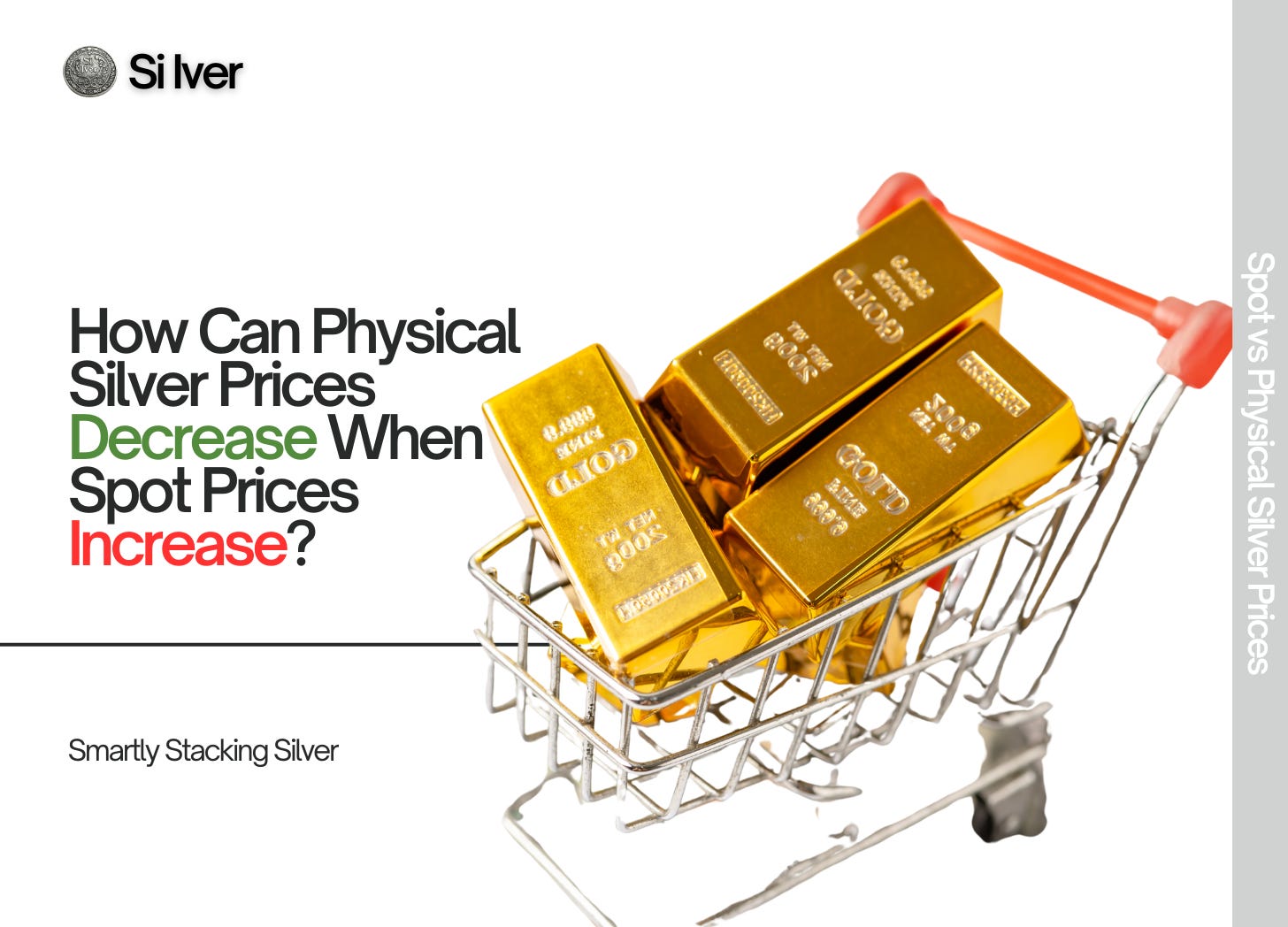How Can Physical Silver Prices Decrease When Spot Prices Increase?
Explore why rising gold and silver spot prices don't match declining buy prices due to oversupply. Learn how supply and demand impact the bullion market.
The bullion market is experiencing an unusual trend: while gold and silver spot prices have surged, buy prices from dealers and wholesalers are dropping. This contradiction has left many investors frustrated and confused. However, this phenomenon isn't due to market manipulation or conspiracy—it’s a textbook case of supply and demand in action.
As of the latest market movements, gold has reached an impressive $3,000 per ounce, while silver is trading around $33.50 per ounce. Just a year ago, gold was hovering around $2,000 per ounce, meaning it's seen a 50% increase. Silver, which was in the mid-$20 range, has climbed over 33% in the same period. While rising spot prices usually suggest a strong market, the reality is that buy prices from dealers have been declining. This trend has left many bullion holders puzzled as to why they’re getting less money when selling their gold and silver despite the higher spot prices.
The key to understanding this lies in the supply of physical bullion. Right now, a significant amount of gold and silver is flooding the market. Dealers across the country are reporting record inflows of bullion, creating an oversupply situation. Even if demand remains stable, the sheer volume of available metal pushes buy prices down. It’s not that dealers are trying to suppress prices—it’s simply that they have more inventory than they can handle.
This is fundamentally different from what happened during the COVID-19 pandemic. Back then, demand for gold and silver skyrocketed as economic uncertainty drove investors toward precious metals. Supply couldn’t keep up, so dealers were forced to raise their buy prices to secure inventory. Now, the situation is reversed: supply has surged, but demand has not risen proportionally, leading to lower buy prices despite higher spot prices.
The mechanics of the bullion trade also play a role in this trend. Small coin shops and large dealers alike operate on a system where excess inventory must be offloaded to wholesalers. If a local dealer is buying more than they can sell to retail customers, they need to liquidate the surplus, often at lower wholesale prices. This drives down buy prices across the board.
Additionally, market conditions vary depending on location. In major cities where multiple dealers compete, inventory turnover is high, and prices may fluctuate more dynamically. In contrast, smaller towns with fewer coin shops may see less price volatility. If a dealer in a less competitive market has a loyal customer base, they may be able to hold onto their inventory longer and fetch higher prices. However, in most populated areas, the surge in supply has created downward pressure on buy prices.
For investors, this environment presents opportunities. If you’re considering acquiring bullion, now might be a good time to visit your local coin shop and see what deals are available. While spot prices remain high, the abundance of supply means you may be able to negotiate better rates on physical gold and silver.
Understanding these supply and demand dynamics is crucial for navigating the bullion market effectively. While it may seem counterintuitive, the current decline in buy prices is simply the result of an oversupplied market adjusting to new conditions.
We recommend partnering with us to purchase silver on layaway, with the option to cash out anytime.

